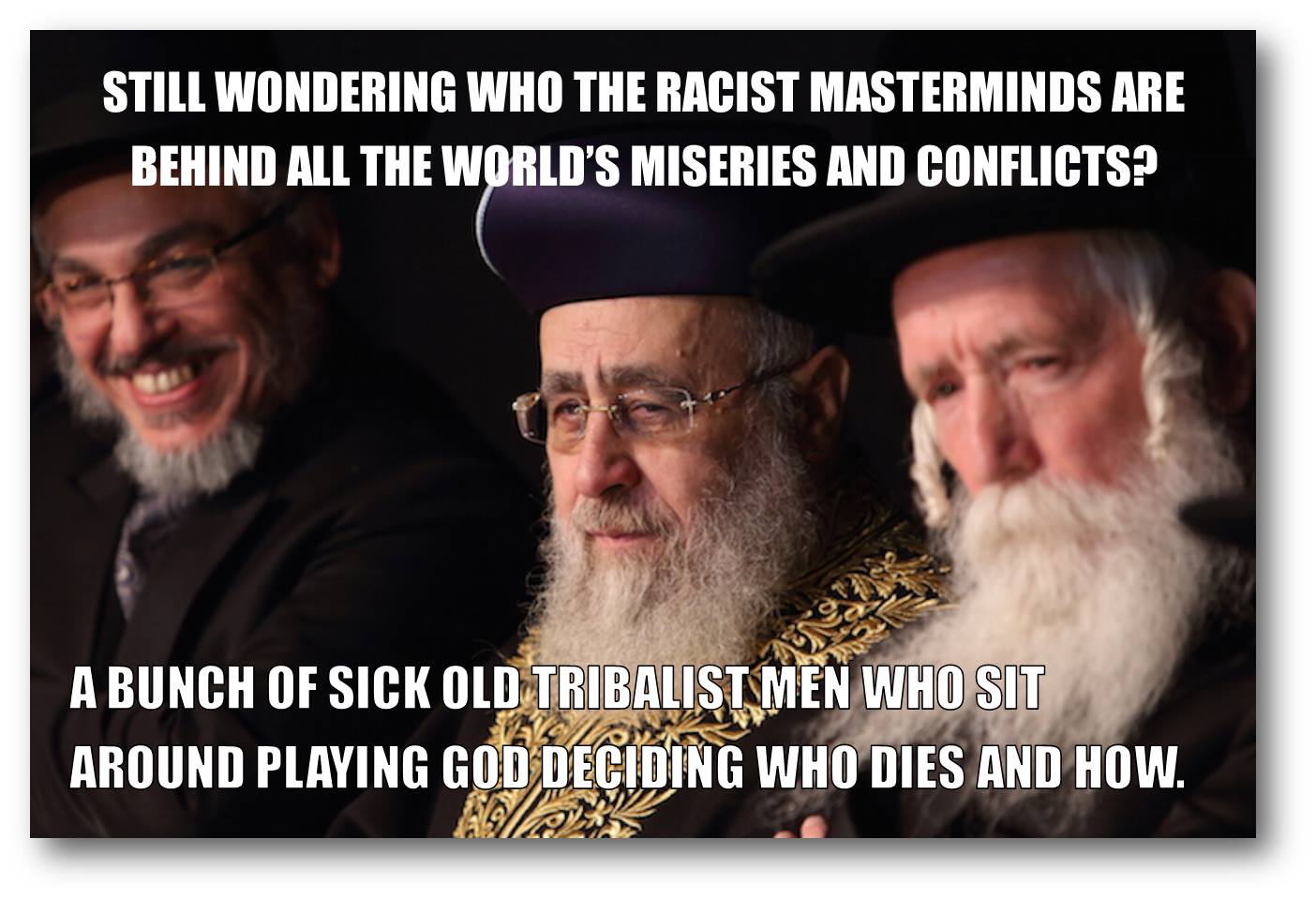UK ULEZ Camera surveillance
Views: 15
Best viewed in Desktop Mode

















“I will make those who are of the synagogue of Satan, who claim to be Jews though they are not, but are liars—I will make them come and fall down at your feet and acknowledge that I have loved you.” Rev 3.9
“I know thy works, and tribulation, and poverty, (but thou art rich) and I know the blasphemy of them which say they are Jews, and are not, but are the synagogue of Satan.” Rev. 2.9
"But when he saw many of the Pharisees and Sadducees come to his baptism, he said unto them, O generation of vipers, who hath warned you to flee from the wrath to come." Matthew 3:7
“For he is not a Jew who is one outwardly, nor is circumcision that which is outward in the flesh. But he is a Jew who is one inwardly; and circumcision is that which is of the heart, by the Spirit, not by the letter; and his praise is not from men, but from God.” – Romans 2:28-29
"I and my Father are one,[31] Then the Jews took up stones again to stone him. JOHN 10:30-31
For you, brothers and sisters, became imitators of the churches of God in Christ Jesus that are in Judea, for you suffered the same things from your own compatriots as they did from the Jews, who killed both the Lord Jesus and the prophets, and drove us out; they displease God and oppose everyone by hindering us from speaking to the Gentiles so that they may be saved. Thus they have constantly been filling up the measure of their sins; but God’s wrath has overtaken them at last. - Thessalonians 2:14-16










Islam and Christianity have become servants of the Jews. Acting as physical and spiritual cattle for the Jews to harvest in building their Global Satanic Kingdom.

If I converted to Buddhism, does that make me Chinese? If I converted to Hinduism, does that make me Indian? When Khazarians (Turks) converted to Judaism in 740 BC and stole the true Semite Israelite Greek Aegean identity, did that make the counterfeit Jews Hebrew? Well, the Jew World Order seems to think so. They crucified Jesus Christ for exposing them.
The invention of the Muslim Terrorist by our Jewish Governments... to keep us in fear, and to justify raping the World, and slaughtering billions of innocent families in every country for power and control...for their 2 horned Gods.


 October 15th, 2024
October 15th, 2024  Awake Goy
Awake Goy Jewish Terrorists Bombed King David Hotel in Jerusalem

jewish terrorists bombed king david hotel

jews bombed king david hotel in jerusalem
Views: 21
 October 15th, 2024
October 15th, 2024  Awake Goy
Awake Goy 
meet the charlton mccallum hunting safaris zionist cowards
Views: 14
 October 11th, 2024
October 11th, 2024  Awake Goy
Awake Goy Governments control your weather and climate

man made weather

what is this space force logo trying to tell us
Views: 61
 October 10th, 2024
October 10th, 2024  Awake Goy
Awake Goy Jew spits on a Christian father walking peacefully with his son on the street.
Another Jew pepper sprays him in the eyes while the little boy is watching his dad getting attacked for no reason other than being a Christian.
Views: 35
 October 8th, 2024
October 8th, 2024  Awake Goy
Awake Goy Trump to jail Americans for criticism of Jews
Views: 84
 October 7th, 2024
October 7th, 2024  Awake Goy
Awake Goy When they call themselves smart… what they truly mean is:
Centuries of Stealing
Centuries of Invading
Centuries of Scamming
Centuries of Mass Murdering
Centuries of Slavery
Centuries of Drug trafficking
Centuries of Deception
The Mafia are the Jews in every Country.
Centuries of Media lies
Centuries of Toxic foods and Medicines
Centuries of Wars
Centuries of Coin Clipping
Centuries of Insider Trading
Centuries of poisoning Christian wells e.g. The Plague that killed 2/3 of Europe.
With all the stolen riches, wealth that they have accumulated over the centuries, passed on to generations, they then buy up Corporations to look legit & call their own.
Views: 88
 October 7th, 2024
October 7th, 2024  Awake Goy
Awake Goy  October 6th, 2024
October 6th, 2024  Awake Goy
Awake Goy  October 6th, 2024
October 6th, 2024  Awake Goy
Awake Goy  September 29th, 2024
September 29th, 2024  Awake Goy
Awake Goy The translations from Greek to Arabic were not done by Muslims.
Even great fans of Greece like Avicennas or Averrois did not know Old Greek, they read the texts from translations into Arabic that had been edited by Armenian Christians like Hunain ibn-Ishaq, known as the “Prince of Translations”.
Ancient Greece represented a world foreign to Islam. From the knowledge of the ancient Greeks, only everything that did not threaten religion was passed on to Arabic.
Greek philosophy, literature and tragedy were never accepted by the Muslim culture.
Aristotle’s influence was limited to the fields of logic and natural sciences.
Neither Metaphysics nor Politics was ever translated into Arabic, Islam was never “Greeked”.
The Christianized Roman state of the Greek Nation (Heisenberg’s definition of Romania) received knowledge as its heritage and extensively sought it out as it supplemented the texts already at its disposal.
The former mainly used it scientifically and politically, and then in his nadir with the escape of the most prominent of scientists and rationalists (p. x Vissario and his marvelous library) transferred it to a great extent to the West.
For the reason of safe and for the “stinkers” who need sources to be convinced the Arabs left only about 1500 manuscripts mainly Mathematics and Astronomy and the Byzantines about .. 7500 mostly Ancient Greek Secretariat (c. .. Kontoyorgis)!
Renaissance has also begun in Northern Italy (Venice, Genoa, etc. α. ) where the Byzantine Scholars gathered. Erasmos b x. learned Greek (and recorded the Ancient accent) in Venice from the great Scholar Theodoros Laskaris (Cath. .. Babinian).
The Arabs never crossed the Pyrenees (they lost at the battle of Poutier in 732 m. .. from Carol Martello) and they stayed in Spain. Why then didn’t the Renaissance start in Spain???? Because simply the smelting of the Greek spirit to the West is due to the relocation of the Byzantine World (and to Byzantine in general) to the cities of the North. Italy, during the period of its decline.
Views: 71
 September 29th, 2024
September 29th, 2024  Awake Goy
Awake Goy Eric Clapton is blowing the whistle on Jewish supremacy around the world
Views: 185
 September 27th, 2024
September 27th, 2024  Awake Goy
Awake Goy The Satanic Jewish origins of NASA
Views: 134
 September 26th, 2024
September 26th, 2024  Awake Goy
Awake Goy Rabbi Alon Anava exposes the Jew World Order
Views: 84
 September 26th, 2024
September 26th, 2024  Awake Goy
Awake Goy Jewish teen girl: “I’m a Jew and our Bible says that you’re like animals”
Views: 117
 September 26th, 2024
September 26th, 2024  Awake Goy
Awake Goy Pilot admits the Earth is flat
Views: 125
















 RSS Feed
RSS Feed






